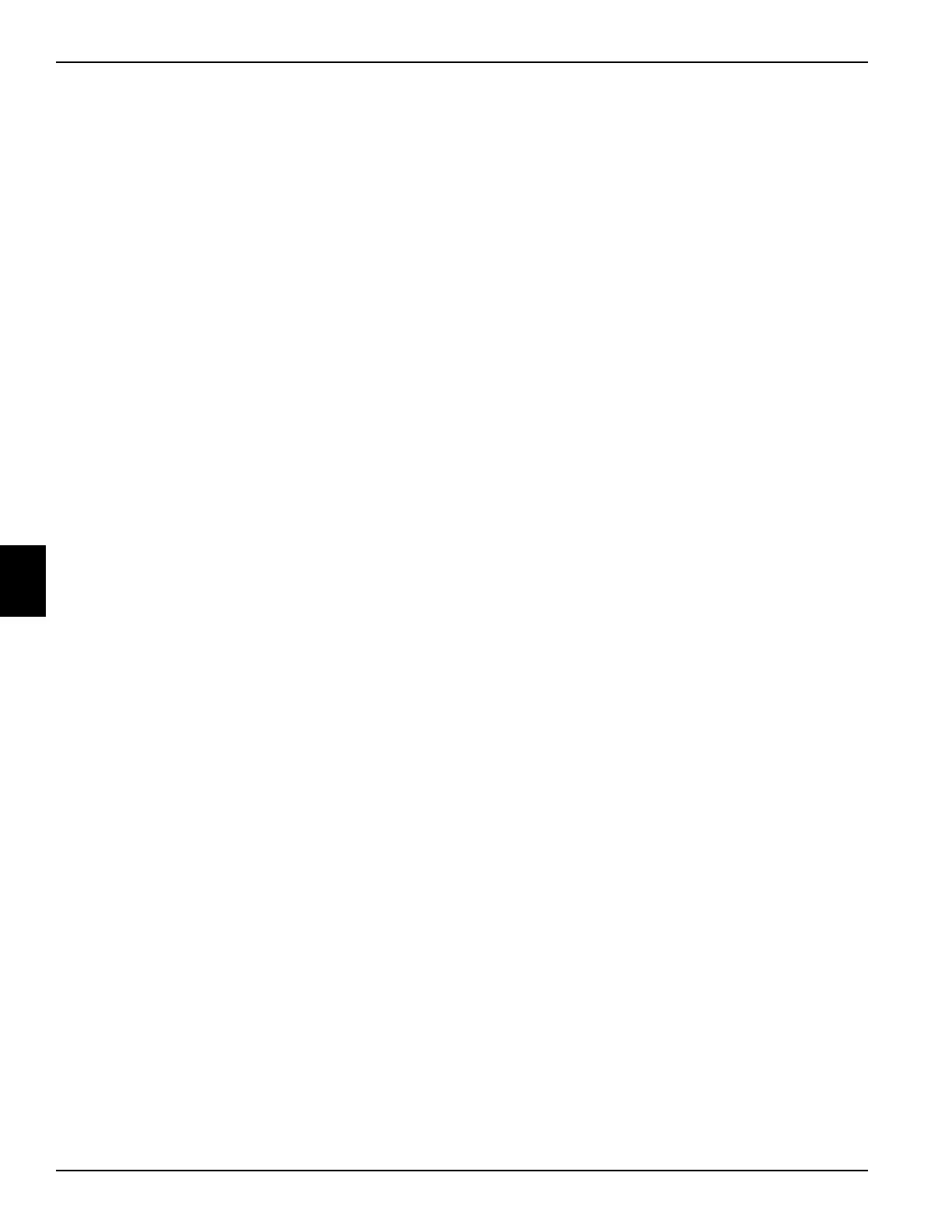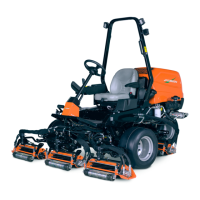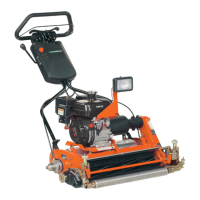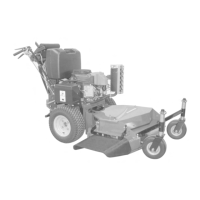5-14 4181383 First Edition
HYDROSTATIC POWER TRAIN
5
Instrument Test Procedures
Instrument Test Overview
The following tests are specifically designed to approach
hydraulic testing on a system level. Each component
within the system represents a portion of the total system
leakage. An internal leakage percentage for each
component will be calculated and recorded, enabling the
technician to view the system performance issue more
completely. The test results will help the technician to
decide which repairs will best remedy the performance
issue experienced by the machine user.
The internal leakage percentage ranges are as follows:
0—10% = Good
11—20% = Marginal
21% and beyond = Bad
Example: Traction System Performance Complaint
The machine operator reports the machine struggles to
climb hills.
A charge pressure test must first be performed to rule out
a charge pump issue. Next, the entire traction system is
tested as outlined, and the calculated system leakage is
37%; a result which requires the testing of individual
components. This result can also be interpreted as the
system is 63% efficient.
The remaining components in question are as follows:
traction pump, left front wheel motor, left check valve, left
rear wheel motor, right front wheel motor, right check
valve, and right rear wheel motor. Following the
procedures as outlined, test each individual component,
then calculate and record leakage percentages.
The results from this test reveal leakage of 3.3% in the
traction pump, 20% in the left front wheel motor, 1.7% in
the left check valve, 1.8% in the left rear wheel motor,
2.1% in the right front wheel motor, 2.8% in the right
check valve, and 4.3% in the right rear wheel motor.
Although all the components lend to the overall system
leakage, only the left front wheel motor, which is at the
extreme end of the marginal range, would be considered
for repair/replacement.
Formulas:
Wheel Motor
Loaded Flow from previous component – Loaded Flow
from current component / Loaded Flow from previous
component x 100 = Leak Percentage
System and Traction Pump
No Load Flow – Loaded Flow / No Load Flow x 100 =
Leak Percentage
Calculations:
System Test
No Load Flow = 15 gpm
Loaded Flow = 9.4 gpm
15 – 9.4 / 10 x 100 = Total System Leakage 37%
Traction Pump Test
No Load Flow = 15 gpm
Loaded Flow = 14.5 gpm
15 – 14.5 / 10 x 100 = Traction Pump Leakage 3.3%
Left Front Wheel Motor Test
Loaded Flow from traction pump test = 14.5 gpm
Loaded Flow from left front wheel motor test = 11.6 gpm
14.5 – 11.6 / 14.5 x 100 = Left Front Wheel Motor
Leakage 20%
Left Check Valve Test
Loaded Flow from left front wheel motor test = 11.6 gpm
Loaded Flow from left check valve test = 11.4 gpm
11.6 – 11.4 / 11.6 x 100 = Left Check Valve Leakage
1.7%
Left Rear Wheel Motor Test
Loaded Flow from left check valve test = 11.4 gpm
Loaded Flow from left rear wheel motor test = 11.2 gpm
11.4 – 11.2 / 11.4 x 100 = Left Rear Wheel Motor
Leakage 1.8%
Right Front Wheel Motor Test
Loaded Flow from traction pump test = 14.5 gpm
Loaded Flow from right front wheel motor test = 14.2 gpm
14.5 – 14.2 / 14.5 x 100 = Right Front Wheel Motor
Leakage 2.1%
Right Check Valve Test
Loaded Flow from right front wheel motor test = 14.2 gpm
Loaded Flow from right check valve test = 13.8 gpm
14.2 – 13.8 / 14.2 x 100 = Right Check Valve Leakage
2.8%
Right Rear Wheel Motor Test
Loaded Flow from right check valve test = 13.8 gpm
Loaded Flow from right rear wheel motor test = 13.2 gpm
13.8 – 13.2 / 13.8 x 100 = Right Rear Wheel Motor
Leakage = 4.3%

